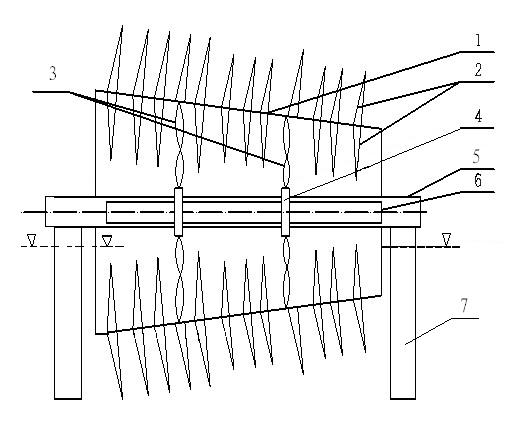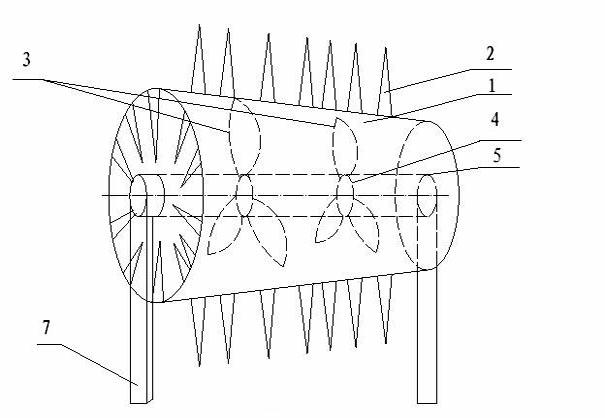Device for photocatalytic abatement of organic pollution of riverway
A technology of organic pollution and photocatalysis, which can be used in light water/sewage treatment, energy waste water treatment, etc. It can solve the problems of river water pollution, insignificant effect, and decrease in the yield of photogenerated electrons and holes, so as to achieve a large surface area for catalytic reaction. , good catalytic effect, the effect of saving electricity
- Summary
- Abstract
- Description
- Claims
- Application Information
AI Technical Summary
Problems solved by technology
Method used
Image
Examples
Embodiment Construction
[0012] Reference Figure 1-2 The present invention has a tapered cylinder 1, and the taper between the large end and the small end of the tapered cylinder 1 ranges from 10° to 20°. A number of pointed cones 2 are evenly distributed on the inner and outer surfaces of the tapered cylinder 1. The pointed cones 2 are evenly distributed on the inner and outer surfaces of the tapered cylinder 1 in a radial shape. The inner surface of the tapered cylinder 1 The upper pointed cone 2 is fixed perpendicular to the inner surface and extends in the direction of the central axis of the tapered cylinder 1, and the pointed cone 2 on the outer surface of the tapered cylinder 1 is fixed perpendicular to the outer surface and extends outward. The sharp cone 2 on the inner side of the cone cylinder 1 is covered with TiO for ultraviolet photocatalysis 2 , The pointed cone 2 on the outer surface of the conical cylinder 1 is covered with TiO doped with nitrogen for solar photocatalysis 2 . A quartz...
PUM
 Login to View More
Login to View More Abstract
Description
Claims
Application Information
 Login to View More
Login to View More - R&D
- Intellectual Property
- Life Sciences
- Materials
- Tech Scout
- Unparalleled Data Quality
- Higher Quality Content
- 60% Fewer Hallucinations
Browse by: Latest US Patents, China's latest patents, Technical Efficacy Thesaurus, Application Domain, Technology Topic, Popular Technical Reports.
© 2025 PatSnap. All rights reserved.Legal|Privacy policy|Modern Slavery Act Transparency Statement|Sitemap|About US| Contact US: help@patsnap.com



